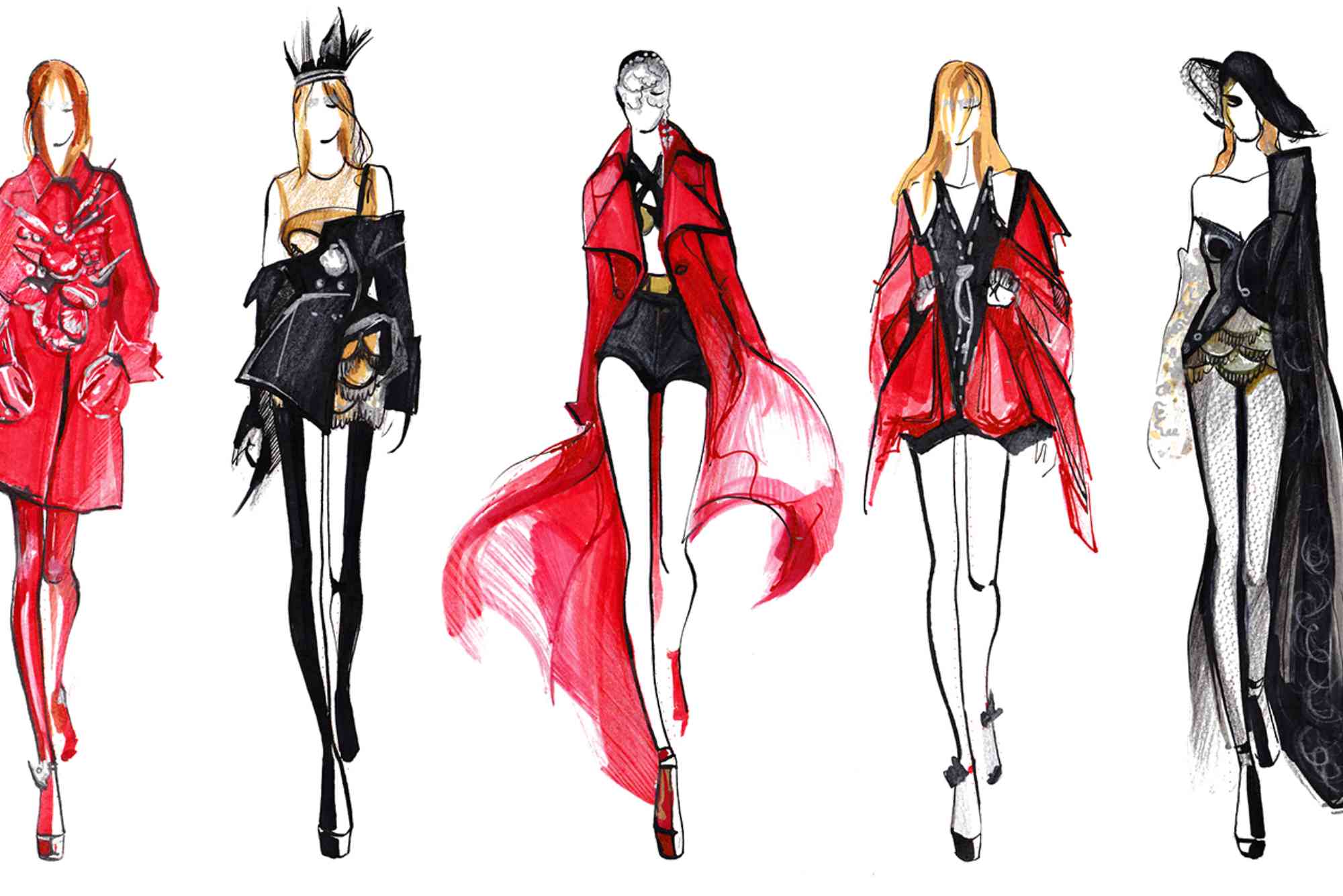Fashion Illustration Haute Couture Sketch Ideas
Fashion illustration, especially in the haute couture realm, is more than art—it’s a designer’s first whisper of imagination. The world of fashion illustration haute couture brings together elegance, fantasy, and precision, translating high-end fashion visions onto paper. In this guide, we explore original sketch ideas, styling tips, artistic techniques, and inspiration sources for aspiring and professional illustrators looking to make their mark in the haute couture space.
What Makes Haute Couture Fashion Illustration Unique?
Fashion illustration haute couture is distinct for its dramatic flair, luxurious detailing, and avant-garde concepts. Unlike ready-to-wear fashion drawings, haute couture sketches are aspirational and highly stylized. They capture fabric texture, intricate embroidery, and the silhouette’s movement even before a single thread is sewn.
This form of illustration must reflect craftsmanship and the exclusivity haute couture is known for. From feathered gowns to crystal embellishments, every illustrated detail tells a story of couture creativity.
Key Elements in Haute Couture Fashion Illustration
Emphasis on Silhouettes
High fashion sketches often play with structure. Exaggerated shoulders, voluminous skirts, or ultra-fitted bodices demand proportion control and a deep understanding of human anatomy. The fashion croquis must serve as a flexible base, adaptable to dramatic shapes.
Detailing Fabric Textures
Illustrators need to master the look of satin, chiffon, lace, tulle, and sequins using pencil, markers, watercolor, or digital brushes. Accurately depicting these textures enhances realism and evokes the luxury that defines haute couture.
Expressive Lines and Poses
Strong poses convey confidence and attitude. Elongated limbs, flowing gowns, and dynamic stances bring life to the sketch. Movement is essential—whether it’s a cape caught in the wind or a train trailing behind.
Color Theory in Couture
Choosing rich, refined colors—jewel tones, gold, silver, or even classic black and white—can transform a simple sketch into a statement piece. Subtle gradients help mimic how light reflects off fine fabrics.
Fashion Illustration Haute Couture Sketch Ideas
Let’s dive into several haute couture sketch themes that continue to inspire fashion illustrators globally.
Modern Royalty
Design a gown fit for a contemporary queen. Think metallic accents, deep velvet, capes, and intricate beading. Draw from regal silhouettes and reinterpret them with modern cuts.
Futuristic Glamour
Sketch an outfit imagining fashion in 2050. Use unconventional materials like plastic, LED fiber optics, or 3D-printed textures. Keep lines sleek and structured to reflect innovation.
Ethereal Bridal Couture
Illustrate a couture bridal look with layered tulle, translucent veils, and crystal details. Soft pastel palettes and dreamy silhouettes enhance the romanticism.
Gothic Elegance
Create a darker, more mysterious haute couture look. Use blacks, deep reds, and lace, with dramatic collars or cathedral trains. Focus on mood, lighting, and emotion in your illustration.
Nature-Inspired Ensembles
Take cues from flowers, oceans, or forests. Translate petal shapes into ruffles or mimic butterfly wings with organza layers. Color schemes can reflect seasons or landscapes.
Tips to Improve Your Couture Fashion Illustrations
Understand Couture Construction
While you don’t need to sew garments, knowing how they’re constructed improves accuracy. Study couture collections by Dior, Elie Saab, or Valentino to see how designers layer fabric and use embroidery.
Choose the Right Medium
Pencil offers control for structure. Markers are great for bold colors. Watercolors bring softness, while digital tools offer layering and texture simulations. Experiment and find your signature style.
Focus on Accessories and Styling
Couture fashion includes elaborate headpieces, jewelry, and shoes. A complete look elevates your sketch. Accessories can also serve as focal points, especially in editorial-style illustrations.
Observe Real Couture Collections
Review runway collections from Paris Fashion Week Haute Couture to observe trends, craftsmanship, and silhouettes. The Vogue Runway archive is a reliable resource.
How to Build a Portfolio with Haute Couture Illustrations
A couture sketch portfolio needs both diversity and a clear personal aesthetic. Here’s how to build one effectively:
Start with a Strong Croquis
Use a base figure that reflects your preferred style—elongated, stylized, or anatomically precise. Maintain consistency across sketches for a polished look.
Highlight Variety
Include multiple themes—romantic, futuristic, classic, avant-garde. Display your ability to design across different styles while keeping high fashion as the focus.
Show Process Work
Include concept boards, rough drafts, or detail zoom-ins. This adds authenticity and demonstrates your artistic evolution—something employers and clients value.
Add Texture Swatches
Pair sketches with fabric samples or simulated swatches. This gives depth to your designs and shows your attention to materials.
Why Fashion Illustration Still Matters in a Digital Era
In a world of 3D fashion design and AI-generated mockups, hand-drawn haute couture illustrations continue to hold artistic and commercial value. They:
- Communicate the designer’s intent before samples are made
- Provide stylized visual storytelling for magazines and marketing
- Preserve a sense of artistry that digital tools often overlook
Fashion houses like Chanel and Valentino still rely on illustrations for mood boards, collection previews, and exclusive client presentations.
Let Your Sketchbook Speak Luxury
Fashion illustration haute couture is about elegance, passion, and precision. Whether you’re drawing for yourself, school, or a couture label, your art should always reflect the opulence and detail that defines haute couture.
So grab your pens, brushes, or tablet and start sketching ideas that push boundaries and spark emotion.
Ready to elevate your haute couture sketch game? Start today by choosing one of the ideas above and bringing it to life.
FAQs
What is the difference between fashion illustration and haute couture illustration?
Fashion illustration covers all types of clothing, including casual and ready-to-wear. Haute couture illustration focuses on high-end, custom designs with more detail and luxury.
How do I start learning haute couture fashion illustration?
Begin by studying runway shows, practicing sketching silhouettes, and experimenting with fabric textures. Take online courses or follow experienced illustrators for guidance.
What materials are best for haute couture sketches?
Watercolor, fine liners, colored pencils, and metallic inks work well. For digital, Procreate and Adobe Illustrator are excellent options.
Can I make a career in haute couture illustration?
Yes. With a solid portfolio, you can work with fashion houses, magazines, or freelance for designers. Networking and consistency are key.
How can I show fabric texture in my fashion illustrations?
Use layering, highlights, and blending techniques. Observe how different fabrics behave under light and replicate that in your sketch.





